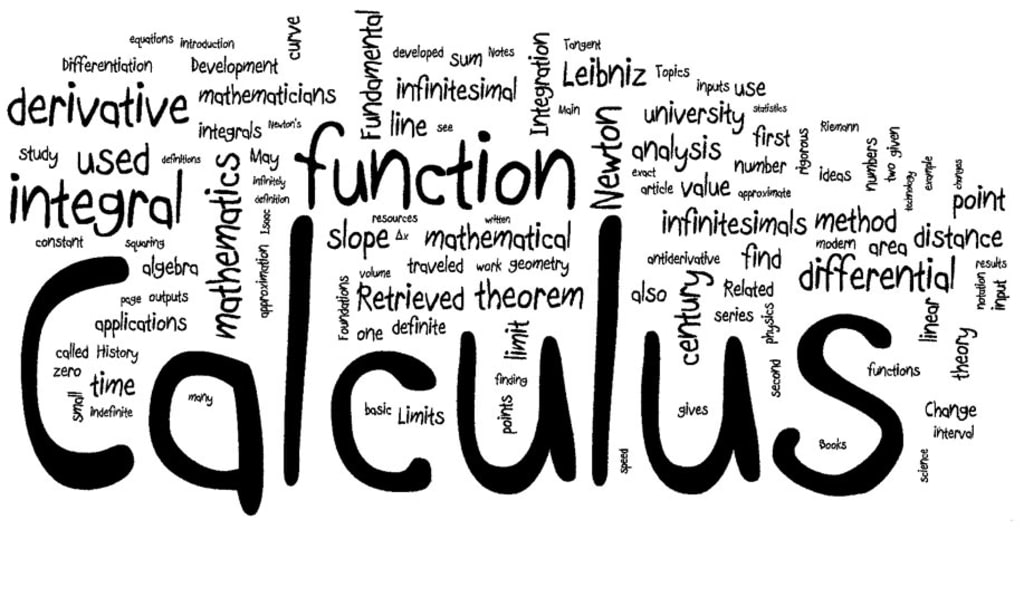Innovative Solutions for Calculus Problems: From Limits to Integrals
Exploring New Methods for Efficient Calculus Problem Solving

Calculus, a branch of mathematics that deals with change and motion, has been a cornerstone of scientific and engineering disciplines for centuries. From understanding the rate of change (derivatives) to calculating areas under curves (integrals), calculus plays a vital role in numerous fields. However, traditional methods of solving calculus problems can be time-consuming and complex. This article explores innovative solutions that simplify and enhance the process of solving calculus problems, from limits to integrals.
Understanding Limits
Definition and Basic Concept
Limits are fundamental to calculus, representing the value that a function approaches as the input approaches a certain point. They form the foundation for defining both derivatives and integrals.
Traditional Methods for Solving Limits
Typically, solving limits involves algebraic manipulation, factoring, and using L'Hôpital's rule. These methods, while effective, can be cumbersome for complex functions.
Innovative Techniques for Limits
Recent advancements have introduced more efficient techniques. For instance, graphical approaches using technology can visually depict the behavior of functions near specific points, providing intuitive insights into limits. Additionally, machine learning algorithms can predict limits for highly complex functions, saving time and effort.
Exploring Derivatives
Basics of Derivatives
Derivatives measure how a function changes as its input changes. They are crucial for understanding rates of change in various contexts, from physics to economics.
Standard Methods of Differentiation
Traditional differentiation involves applying rules such as the power rule, product rule, quotient rule, and chain rule. While these methods are foundational, they can become tedious for intricate functions.
New Approaches to Derivatives
Innovative methods include using computer algebra systems (CAS) like Mathematica and MATLAB, which can perform symbolic differentiation quickly and accurately. Additionally, neural networks are being trained to approximate derivatives, offering new ways to handle highly complex or non-differentiable functions.
Receive personalized calculus assignment help tailored to your academic level and requirements, covering topics like limits, differentiation, and optimization with detailed explanations.
Applications of Derivatives
Real-World Examples
Derivatives have wide-ranging applications, such as calculating velocity in physics, optimizing functions in economics, and analyzing trends in data science.
Technological Innovations in Derivative Calculations
Tools like WolframAlpha and Symbolab provide instant solutions to derivative problems, offering step-by-step explanations. These platforms use advanced algorithms to handle even the most challenging differentiation tasks.
Integrals and Their Importance
Introduction to Integrals
Integrals represent the accumulation of quantities and are used to calculate areas, volumes, and other important quantities. There are two main types: definite and indefinite integrals.
Conventional Integration Methods
Traditional methods include integration by substitution, integration by parts, and partial fraction decomposition. These techniques, while essential, can be labor-intensive for complex integrals.
Cutting-Edge Integration Techniques
Modern approaches leverage computational tools. Software like Maple and MATLAB can perform symbolic integration, handling functions that would be impractical to integrate by hand. Moreover, numerical integration methods, powered by computer algorithms, can approximate integrals for functions that do not have closed-form solutions.
Definite vs. Indefinite Integrals
Key Differences
Definite integrals calculate the net area under a curve within specific bounds, while indefinite integrals represent a family of functions whose derivatives are the integrand.
Modern Solutions for Both Types
Definite integrals benefit from numerical methods such as the trapezoidal rule and Simpson's rule, implemented in various software tools. Indefinite integrals can be tackled using symbolic computation in platforms like WolframAlpha.
Applications of Integrals
Practical Uses in Various Fields
Integrals are used in physics to determine displacement and energy, in engineering to design systems, and in economics to calculate total costs and revenues over time.
Innovations in Applying Integrals
Innovative applications include using integrals in machine learning algorithms to optimize loss functions and in computer graphics to model realistic animations.
The Role of Technology in Calculus
Calculus Software and Tools
Software tools like Mathematica, MATLAB, and Maple have revolutionized the way we solve calculus problems, providing powerful computational capabilities and user-friendly interfaces.
Benefits of Using Technology in Calculus
Technology enhances accuracy, saves time, and makes complex problems more approachable. It also offers visual representations that aid in understanding and interpreting calculus concepts.
Machine Learning and Calculus
How AI is Changing Calculus
Artificial intelligence (AI) is transforming calculus by automating problem-solving processes and offering predictive insights. Machine learning models can learn patterns in data and provide solutions to calculus problems that are otherwise difficult to solve analytically.
Examples of AI in Solving Calculus Problems
AI algorithms can solve differential equations, optimize functions, and even predict the behavior of complex systems. For example, neural networks can approximate solutions to integral problems that lack analytical solutions.
Online Resources and Calculus Education
Digital Learning Platforms
Platforms like Khan Academy, Coursera, and edX offer comprehensive courses on calculus, providing interactive lessons, exercises, and real-time feedback.
Innovative Online Courses and Tutorials
These platforms utilize video tutorials, interactive simulations, and gamified learning experiences to make calculus more engaging and accessible.
Graphical Solutions to Calculus Problems
Visualizing Limits, Derivatives, and Integrals
Graphical solutions help in understanding the behavior of functions. Tools like Desmos and GeoGebra allow users to plot functions and visualize their limits, derivatives, and integrals.
Technology Tools for Graphical Solutions
These tools provide interactive environments where users can manipulate variables and instantly see the effects, fostering a deeper understanding of calculus concepts.
Symbolic Computation and Calculus
Importance of Symbolic Computation
Symbolic computation involves solving mathematical problems exactly, using symbols rather than numerical approximations. This approach is crucial for deriving general solutions and understanding the underlying structure of problems.
Advanced Techniques in Symbolic Calculus
Advanced techniques include the use of computer algebra systems to perform symbolic differentiation and integration, simplifying complex problems and providing exact solutions.
Challenges in Modern Calculus Solutions
Common Obstacles
Challenges include handling highly complex functions, dealing with non-differentiable or non-integrable functions, and ensuring accuracy in numerical methods.
How Innovations Are Addressing These Challenges
Innovations like AI, machine learning, and advanced computational tools are overcoming these obstacles by providing new methods for approximation, prediction, and visualization.
Future of Calculus Problem Solving
Predictions and Trends
The future of calculus problem solving lies in the integration of AI and machine learning, enhancing our ability to handle increasingly complex problems with greater efficiency and accuracy.
Emerging Technologies in Calculus
Emerging technologies include quantum computing, which has the potential to revolutionize calculus by solving problems that are currently intractable.
Conclusion
Innovations in calculus are transforming the way we approach and solve problems, making complex concepts more accessible and manageable. From the use of advanced computational tools to the integration of AI and machine learning, these advancements are paving the way for a new era in mathematical problem solving. By embracing these technologies, we can tackle increasingly challenging problems with confidence and precision.
FAQs
- What are some common software tools for solving calculus problems?
- Popular tools include Mathematica, MATLAB, Maple, WolframAlpha, and Symbolab, all of which offer powerful capabilities for solving calculus problems.
- How is AI used in solving calculus problems?
- AI is used to automate problem-solving processes, predict solutions, and approximate functions that are difficult to handle analytically.
- What are the benefits of using graphical tools in calculus?
- Graphical tools help visualize functions and their properties, making it easier to understand concepts like limits, derivatives, and integrals.
- Can machine learning solve complex integral problems?
- Yes, machine learning models can approximate solutions to complex integral problems, especially those without closed-form solutions.
- How are online platforms changing calculus education?
- Online platforms provide interactive, engaging, and accessible resources for learning calculus, including video tutorials, simulations, and real-time feedback.
About the Creator
thomas smith
Hello, I am Jessica Tyler, an experienced academic writer. If you are currently facing challenges with your MATLAB Assignment Help, worry not – I am here to assist you. I offer personalized Assignment Help services.
Enjoyed the story? Support the Creator.
Subscribe for free to receive all their stories in your feed. You could also pledge your support or give them a one-off tip, letting them know you appreciate their work.






Comments (1)
Good work. I am not really a math person except that I do like mathematical terminology from addition to vectors and all terms in between general math through calculus.